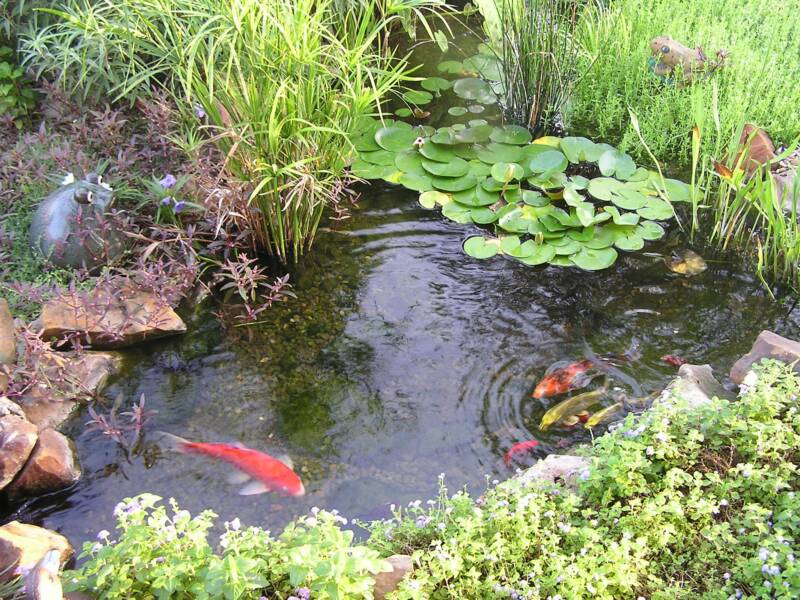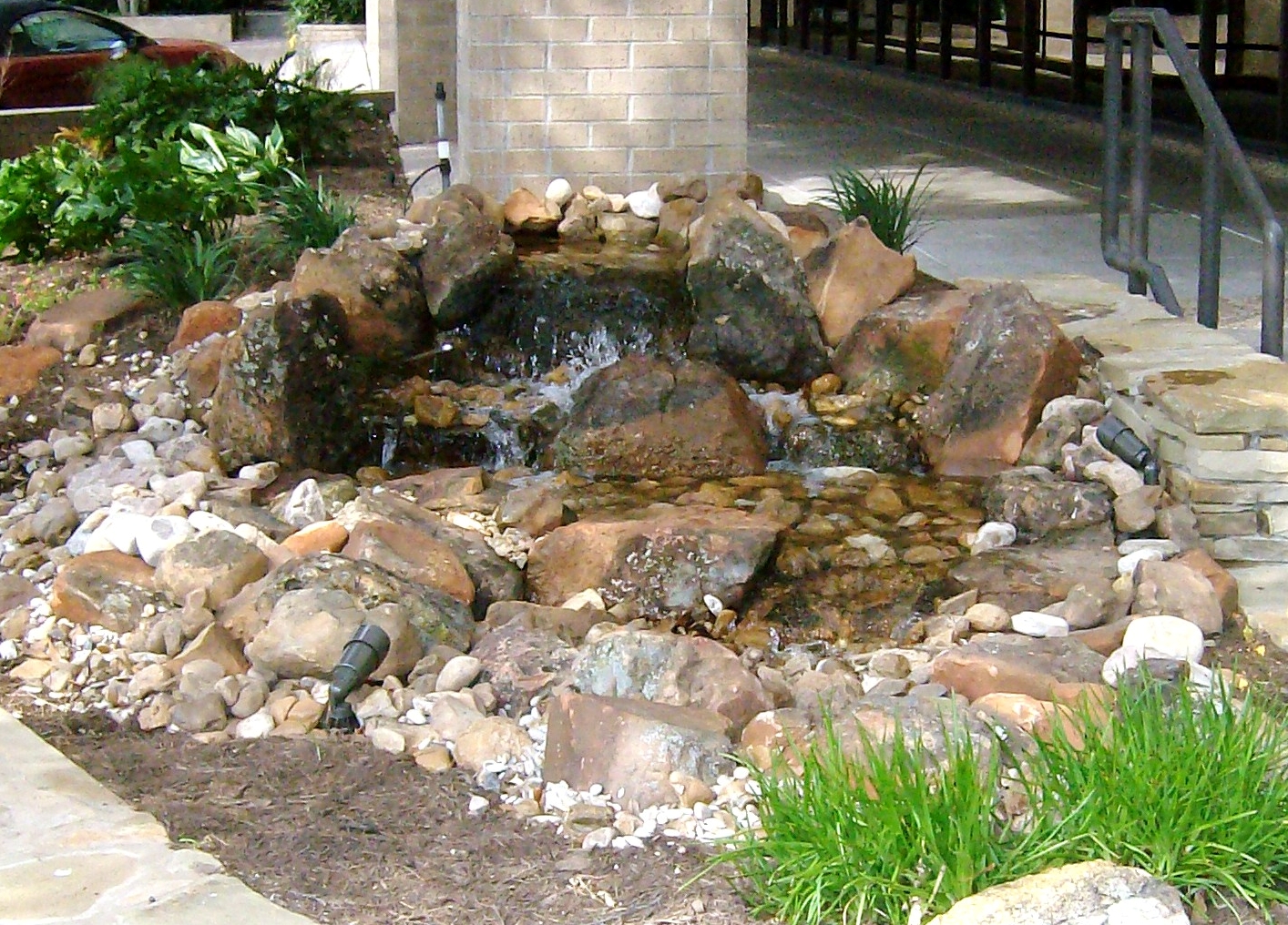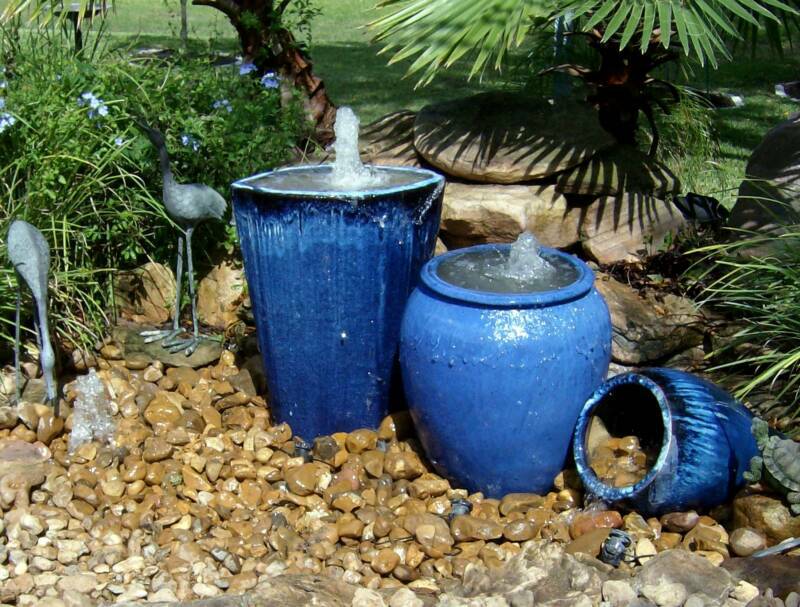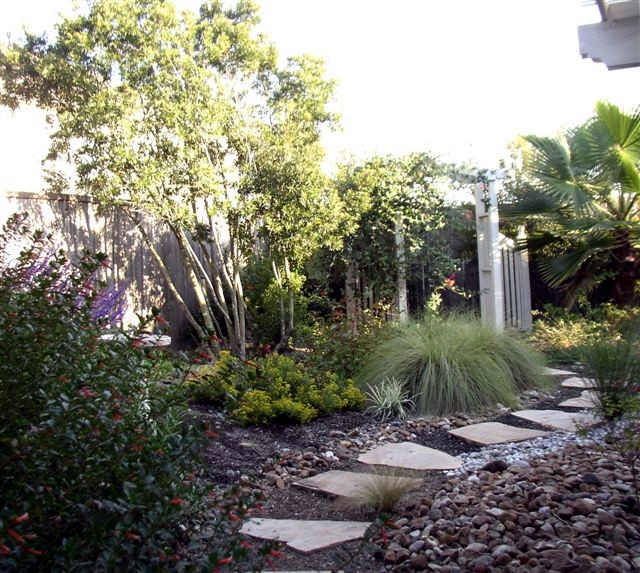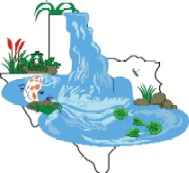


Rainwater Harvesting
Organic Ecosystem Ponds
Pondless Waterfalls
Urn and Fountain Features
Water-Wise Landscapes
Meet Your Water Feature Professionals


Texas Ponds and
Water Features
Nightlighting Your Waterscape
by Matt Boring
The Natural Water Gardener
Starlight, star bright, first star I see tonight......... Watching the stars is a great way to spend a summer’s night in the country. I like to stargaze when I’m camping away from city lights. Sometimes when I’m driving at night between cities on a night with no moon I’ll pull into a picnic area and am always amazed at the sheer number of stars in the sky and how brightly they light up the area. But back in the city, starlight won’t do much to light up your landscape at night. Even a full moon would be hard-pressed to bring out any color in your nighttime landscape. And if you own a pond, it would be difficult to truly enjoy at night without lights.
If you are lucky enough to have a pond in your landscape, you have a real opportunity to create a magical moving masterpiece of nature with your nightlighting scheme. Lights in the waterfalls and in the pond cast a glow on the surrounding landscape that is in constant motion as the surface of the water ripples from the splash of the waterfall. Watching the trees from below is like watching the glow from a campfire. They seem to move even when there’s no wind blowing. Colors seem to flash like a strobe light as fish glide past underwater lights. It’s both surprising and entertaining. I used to have one goldfish that would just sit there hovering in front of a spotlight like he wanted to be the next American Idol. I thought he was blinding himself till I remembered that his eyes don’t look forward.
There are many ways to go about lighting your waterscape at night. Lights in the pond are practically a must. You can also light the plants around the pond to bring out special features of the plant such as the smooth polished look of Crape Myrtle trunks. You can also shoot lights across the surface of the pond to bounce off the water and light plants or other features across the pond. When using reflected light, you must be sure that the lights don’t shine toward the main viewing areas of the pond so you don’t blind yourself or your guests. You can also light the pond from far above such as with floodlights from a roof to create a soft look as if in the moonlight. Light from above will create shadows and patterns on the ground and on the pond’s surface if it shines through trees or other plants.
Outdoor lights are connected to a low-voltage transformer which should be plugged into a GFCI protected plug. The size of the transformer will determine how many lights you can connect to it. For instance, a 150-watt transformer can power six 20-watt lights and three 10-watt lights. You can purchase transformers in different sizes depending on your needs. If you don’t choose to have a professional landscaper light your nighttime landscape, you still have a lot of options for the do-it-yourself-er. Many big box stores carry outdoor nightlighting supplies. Some of them carry a surprisingly large selection of styles and even underwater lights. The quality varies, so don’t just compare price.
If you have a water feature that is a balanced organic ecosystem, you should never have a problem with cloudy green water. The clarity of the water is important to consider before choosing to illuminate it. If your water is murky and green with suspended algae, underwater lights will produce a dull green glow. It’s best to work with nature to ensure a healthy pond ecosystem before accenting the water with light.
Lights in the pond allow you to see your fish at night and double the amount of time you can enjoy your pond. You can even aim lights in the pond to shine out and accent part of the surrounding landscape or rock work. Placing smaller lights to shine up into the waterfall illuminates the falling water like glowing glass. Placing lights on either side of the waterfall shining into the falling water creates a similar dramatic effect. Having the pond water illuminated at night is also safer for those who may be walking around it in relative darkness since the water’s edge is more clearly defined.
*NOTE Don’t use light fixtures with copper or brass on them in your water as they can end up harming your fish. Be sure that any lights you place in the water are rated for underwater use. Just because it’s an outdoor light and can survive the rain doesn’t mean in can be submerged.
The choices for regular out-of-the-water landscape lighting are almost endless and must be tailored to your individual situation and taste. I’ve seen many styles of the hanging lanterns known as carriage lights. Some actually look like the lights used on the old carriages, but some look more nautical, like something you’d see on a boat. Others look like Japanese lanterns and would be great in a garden with other Oriental touches. You can even get them with yellow and orange LED lights that flicker to resemble candles. Place these lights wherever you want a soft light low to the ground, such as along a pathway or in the front of a planting bed.
Uplighting plants and ornamental grasses on the back edge of the pond can create awesome reflected images on the surface of the water, especially when the underwater lights are off. You can also use them to accent statuary and tree canopies if you use a bright enough light or have low enough trees. Some people install these spotlights in the trees so that only the inside of the canopy lights up. Lights are available now that are built into realistic-looking rocks. These are easily hidden among the rocks of the pond to accent wherever you need light but don’t want to see an artificial fixture. Several styles of novelty lights are available and can give your garden a little personality. Glowing mushrooms can be clumped into a shadowy area to provide interest rather than to throw light. A frog sits contentedly under an umbrella that shines light down on him from above.
Lighting the pond area from above with floodlights allows you to enjoy your colorful night-blooming lilies and really see their color at night. It can cast a soft soothing glow over the water’s constantly rippling surface, throwing soft shadows across the entire landscape.
You can install lights in all three areas, in the water, in the landscape, and along the roofline if you want. You can create different looks by simply turning them on in different combinations. For instance, if you can’t see down into your pond’s water from inside the house, you may turn off the underwater lights when you go inside for the evening and turn on the lights that accent the landscape that you can see from indoors. Just hook different light groups to separate transformers and use the ones you want at the time.
If you work during the days and evenings are the main time you can enjoy your pond, then lights are a must. You can increase your opportunity for enjoyment of your water feature immensely when you can sit and watch your fish any time of the day or night that you want to. Your sparkling water garden with its beautiful gliding Koi, colorful aquatic plants, and splashing waterfalls will surely be the center of attention at patio parties, backyard barbecues, and even quiet family evenings at home.
Happy Pondering!

